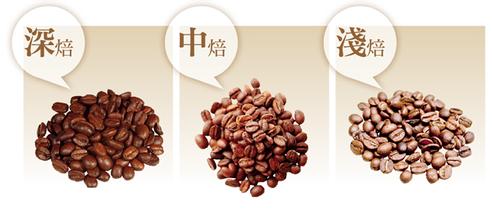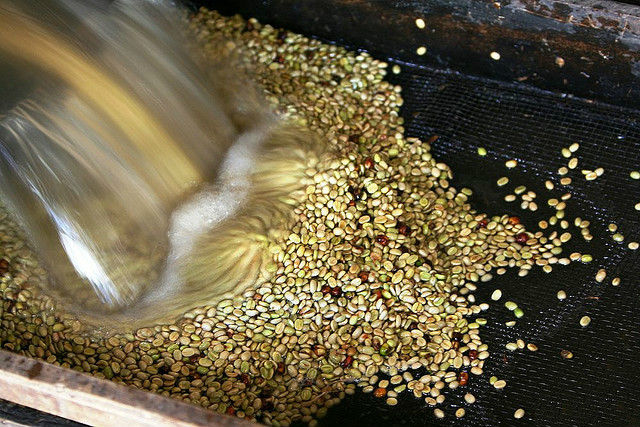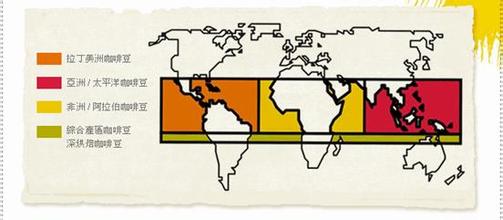Columbia beans, one is Huilan, Colombia, and the other is supr from Medellin, Colombia.
Colombia is the world's largest exporter of washed coffee, and the name Colombia is all too familiar to many coffee drinkers. Most Colombian coffee you can see on the market is named after supremo or excelso, but this is actually the Colombian way of grading, that is, by head (supremo is greater than excelso). But friends who know about coffee may know that the size of coffee is not directly related to its flavor, but more related to its growing environment, harvest, treatment and so on.
John once brought you two Colombian beans, one is Huilan, Colombia, and the other is supremo from Medellin, Colombia.
Narino, like other Colombian regions, produces a lot of coffee every year, but only a small amount is boutique coffee, including this model student. The production of the model student is supervised by the famous laminita. It is a Colombian boutique coffee under Raminita, and it is the essence of the Narino producing area. It carefully selects the specific small farms and agricultural products in the producing area, and only selects the most delicious beans in the harvest period to manually select the supremo grade. The production process is carried out in full accordance with the "Costa Rica European Promotion Standard", which is very different from other Colombian coffee. More refined and more rigorous, annual output is scarce, accounting for only 4 per cent of Narino's total output.
This coffee is full of raw beans, supremo grade, and each bean is very glittering and moist.
Ripe beans taste well balanced, full of aroma, slightly bitter and sweet, echoing with bright sour fruit, moderate fruit taste, light baking with a mild chocolate taste, near second explosion is similar to bitter sweet or heavy chocolate, entering the initial stage of the second explosion is the best, mellow is very good, rich in oil, usually like to drink Southeast Asian beans friends should also like this Colombian.

Important Notice :
前街咖啡 FrontStreet Coffee has moved to new addredd:
FrontStreet Coffee Address: 315,Donghua East Road,GuangZhou
Tel:020 38364473
- Prev

The flavor of Colombian coffee Colombian boutique coffee Millennium Manor washed Kaddura Tibica
The history of Colombian coffee dates back to 1808. A priest brought coffee to Colombia for the first time from the French Antilles via Venezuela. The suitable climate in Colombia provides a real natural pasture for coffee. Since then, coffee trees have taken root in this country. The country has also become the second largest coffee producer after Brazil and the world's largest Arabica coffee.
- Next

SCAA report on Coffee Preservation SCAA of the American Special Coffee Association develops and promotes specialty coffee
A brief introduction to the report on the Preservation of Coffee SCAAMember-DrivenResearch CoffeeStalingReport ByEmmaBladyka,SCAACoffeeScienceManager in food science, coffee is called a stable product. This is because, compared with many other foods, it does not deteriorate due to enzymatic or microbial process destruction (Nicoli et al. 1993; Italian and 2005 viani)
Related
- Detailed explanation of Jadeite planting Land in Panamanian Jadeite Manor introduction to the grading system of Jadeite competitive bidding, Red bid, Green bid and Rose Summer
- Story of Coffee planting in Brenka region of Costa Rica Stonehenge Manor anaerobic heavy honey treatment of flavor mouth
- What's on the barrel of Blue Mountain Coffee beans?
- Can American coffee also pull flowers? How to use hot American style to pull out a good-looking pattern?
- Can you make a cold extract with coffee beans? What is the right proportion for cold-extracted coffee formula?
- Indonesian PWN Gold Mandrine Coffee Origin Features Flavor How to Chong? Mandolin coffee is American.
- A brief introduction to the flavor characteristics of Brazilian yellow bourbon coffee beans
- What is the effect of different water quality on the flavor of cold-extracted coffee? What kind of water is best for brewing coffee?
- Why do you think of Rose Summer whenever you mention Panamanian coffee?
- Introduction to the characteristics of authentic blue mountain coffee bean producing areas? What is the CIB Coffee Authority in Jamaica?

